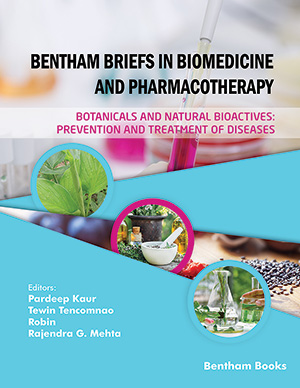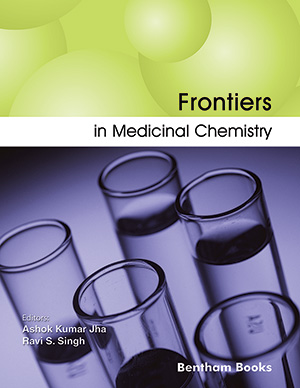[1]
Grinyó, J.M. Why is organ transplantation clinically important? Cold Spring Harb. Perspect. Med., 2013, 3(6)a014985
[2]
Humar, A.; Ramcharan, T.; Denny, R.; Gillingham, K.J.; Payne, W.D.; Matas, A.J. Are wound complications after a kidney transplant more common with modern immunosuppression? Transplantation, 2001, 72(12), 1920-1923.
[3]
Duncan, M.D.; Wilkes, D.S. Transplant-related immune suppression: a review of immunosuppression and pulmonary infections. Proc. Am. Thorac. Soc., 2005, 2(5), 449-455.
[4]
Krasowski, M.D.; Drees, D.; Morris, C.S.; Maakestad, J.; Blau, J.L.; Ekins, S. Cross-reactivity of steroid hormone immunoassays: Clinical significance and two-dimensional molecular similarity prediction. BMC Clin. Pathol., 2014, 14(1), 33.
[5]
Simpson, J.; Zhang, Q.; Ozaeta, P.; Aboleneen, H. A specific method for the measurement of cyclosporin A in human whole blood by liquid chromatography-tandem mass spectrometry. Ther. Drug Monit., 1998, 20(3), 294-300.
[6]
Kim, H-J.; Kang, J-S. Matrix effects: Hurdle for development and validation of bioanalytical LC–MS methods in biological samples analyses. Biodesign, 2016, 4(2), 46-58.
[7]
Matuszewski, B.; Constanzer, M.; Chavez-Eng, C. Strategies for the assessment of matrix effect in quantitative bioanalytical methods based on HPLC− MS/MS. Anal. Chem., 2003, 75(13), 3019-3030.
[8]
Park, Y.J.; Rim, J.H.; Yim, J.; Lee, S-G.; Kim, J-H. Effects of two types of medical contrast media on routine chemistry results by three automated chemistry analyzers. Clin. Biochem., 2017, 50(12), 719-725.
[9]
Dams, R.; Huestis, M.A.; Lambert, W.E.; Murphy, C.M. Matrix effect in bio-analysis of illicit drugs with LC-MS/MS: Influence of ionization type, sample preparation, and biofluid. J. Am. Soc. Mass Spectrom., 2003, 14(11), 1290-1294.
[10]
Matuszewski, B.; Constanzer, M.; Chavez-Eng, C. Matrix effect in quantitative LC/MS/MS analyses of biological fluids: a method for determination of finasteride in human plasma at picogram per milliliter concentrations. Anal. Chem., 1998, 70(5), 882-889.
[11]
Tang, L.; Kebarle, P. Dependence of ion intensity in electrospray mass spectrometry on the concentration of the analytes in the electrosprayed solution. Anal. Chem., 1993, 65(24), 3654-3668.
[12]
Buchwald, A.; Winkler, K.; Epting, T. Validation of an LC-MS/MS method to determine five immunosuppressants with deuterated internal standards including MPA. BMC Clin. Pharmacol., 2012, 12(1), 2.
[13]
Srinivas, T.R.; Meier-Kriesche, H-U. Minimizing immune-suppression, an alternative approach to reducing side effects: objectives and interim result. Clin. J. Am. Soc. Nephrol., 2008, 3(Suppl. 2), S101-S16.
[14]
Christians, U.; Klawitter, J.; Klawitter, J.; Brunner, N.; Schmitz, V. Biomarkers of immunosuppressant organ toxicity after transplantation: status, concepts and misconceptions. Expert Opin. Drug Metab. Toxicol., 2011, 7(2), 175-200.
[15]
McShane, A.J.; Bunch, D.R.; Wang, S. Therapeutic drug moni-toring of immunosuppressants by liquid chromatography–mass spectrometry. Clin. Chim. Acta, 2016, 454, 1-5.
[16]
Thomas, B.; Weir, M.R. Rejection of the Kidney Transplant; Nephrology Secrets: First South Asia Edition-E-Book Elsevier:. , 2018, p. 410.
[17]
Freudenberger, K.; Hilbig, U.; Gauglitz, G. Recent advances in therapeutic drug monitoring of immunosuppressive drugs. TrAC. Trends Analyt. Chem., 2016, 79, 257-268.
[18]
de Jonge, H.; Geerts, I.; Declercq, P.; de Loor, H.; Claes, K.; Desmet, K.; Kuypers, D.R. Apparent elevation of cyclosporine whole blood concentrations in a renal allograft recipient. Ther. Drug Monit., 2010, 32(5), 529-531.
[19]
Morris, R.G.; Salm, P.; Taylor, P.J.; Wicks, F.A.; Theodossi, A. Comparison of the reintroduced MEIA assay with HPLC-MS/MS for the determination of whole-blood sirolimus from transplant recipients. Ther. Drug Monit., 2006, 28(2), 164-168.
[20]
Schmid, R.W.; Lotz, J.; Schweigert, R.; Lackner, K.; Aimo, G.; Friese, J.; Rosiere, T.; Dickson, D.; Kenney, D.; Maine, G.T. Multi-site analytical evaluation of a chemiluminescent magnetic microparticle immunoassay (CMIA) for sirolimus on the Abbott ARCHITECT analyzer. Clin. Biochem., 2009, 42(15), 1543-1548.
[21]
Dasgupta, A.; Davis, B.; Chow, L. Evaluation of QMS everolimus assay using Hitachi 917 Analyzer: Comparison with liquid chromatography/mass spectrometry. Ther. Drug Monit., 2011, 33(2), 149-154.
[22]
Hoffer, E.; Kurnik, D.; Efrati, E.; Scherb, I.; Karasik, M.; Ring, G.; Bentur, Y. Comparison of everolimus QMS immunoassay on architect ci4100 and liquid chromatography/mass spectrometry: Lack of agreement in organ-transplanted patients. Ther. Drug Monit., 2015, 37(2), 214-219.
[23]
Sallustio, B.C.; Noll, B.D.; Morris, R.G. Comparison of blood sirolimus, tacrolimus and everolimus concentrations measured by LC-MS/MS, HPLC-UV and immunoassay methods. Clin. Biochem., 2011, 44(2), 231-236.
[24]
Armendariz, Y.; Garcia, S.; Lopez, R.M.; Pou, L. Hematocrit influences immunoassay performance for the measurement of tacrolimus in whole blood. Ther. Drug Monit., 2005, 27(6), 766-769.
[25]
Westley, I.S.; Taylor, P.J.; Salm, P.; Morris, R.G. Cloned enzyme donor immunoassay tacrolimus assay compared with high-performance liquid chromatography-tandem mass spectrometry and microparticle enzyme immunoassay in liver and renal transplant recipients. Ther. Drug Monit., 2007, 29(5), 584-591.
[26]
Bazin, C.; Guinedor, A.; Barau, C.; Gozalo, C.; Grimbert, P.; Duvoux, C.; Furlan, V.; Massias, L.; Hulin, A. Evaluation of the Architect tacrolimus assay in kidney, liver, and heart transplant recipients. J. Pharm. Biomed. Anal., 2010, 53(4), 997-1002.
[27]
Altinier, S.; Varagnolo, M.; Zaninotto, M.; Boccagni, P.; Plebani, M. Heterophilic antibody interference in a non-endogenous molecule assay: an apparent elevation in the tacrolimus concentration. Clin. Chim. Acta, 2009, 402(1-2), 193-195.
[28]
Taylor, P.J. Matrix effects: The Achilles heel of quantitative high-performance liquid chromatography–electrospray–tandem mass spectrometry. Clin. Biochem., 2005, 38(4), 328-334.
[29]
George, R.; Haywood, A.; Khan, S.; Radovanovic, M.; Simmonds, J.; Norris, R. Enhancement and suppression of ionization in drug analysis using HPLC-MS/MS in support of therapeutic drug monitoring: A review of current knowledge of its minimization and assessment. Ther. Drug Monit., 2018, 40(1), 1-8.
[30]
Bonfiglio, R.; King, R.C.; Olah, T.V.; Merkle, K. The effects of sample preparation methods on the variability of the electrospray ionization response for model drug compounds. Rapid Commun. Mass Spectrom., 1999, 13(12), 1175-1185.
[31]
King, R.; Bonfiglio, R.; Fernandez-Metzler, C.; Miller-Stein, C.; Olah, T. Mechanistic investigation of ionization suppression in electrospray ionization. J. Am. Soc. Mass Spectrom., 2000, 11(11), 942-950.
[32]
Tong, X.S.; Wang, J.; Zheng, S.; Pivnichny, J.V.; Griffin, P.R.; Shen, X.; Donnelly, M.; Vakerich, K.; Nunes, C.; Fenyk-Melody, J. Effect of signal interference from dosing excipients on pharmacokinetic screening of drug candidates by liquid chromatography/mass spectrometry. Anal. Chem., 2002, 74(24), 6305-6313.






























